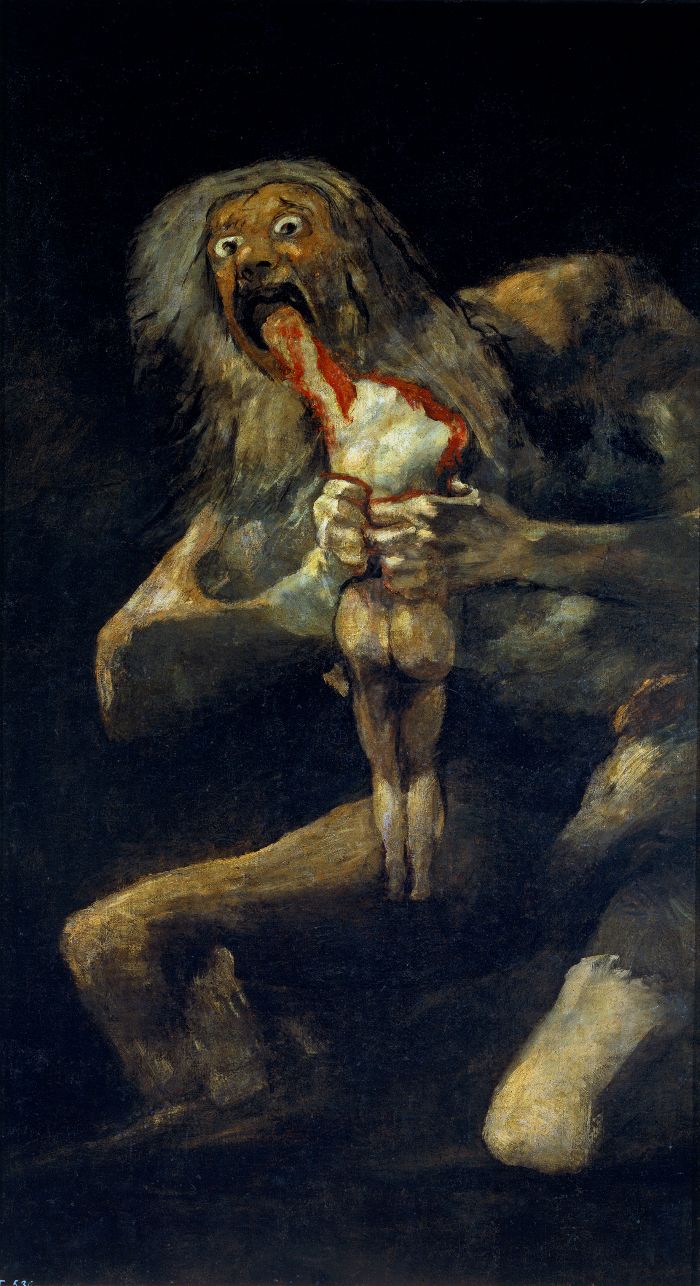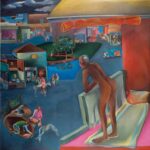Francisco Goya (1746-1828) was one of the most prominent Spanish artists associated with romanticism in the 17th and 18th century. His painting, Saturn Devouring his Son (1823) is one of his most famous works that comes from his collection of The Black Paintings (1819-1823). These paintings are uncomfortable to look at, depicting the gruesome reality of the world which also hints at the deteriorating mental condition of the artist. These paintings were painted in the last years of his life, before which he used to paint lively paintings with vibrant colours as he worked as a court painter for the Spanish royal family, the Bourbons (Charles III and Charles IV.)
However, in his last years he grew eager to show the ugly face of the world and that everything in life, is the opposite of his previous paintings. His black paintings are brutal, haunting and exude absolute madness. The colours used are not only saddening but also frightening. The dominant colour is, of course, black with a hint of mustard and lighter shades of yellow to show light — which is in no way soothing to the eyes and only contribute in making the painting even more terrifying.

Saturn Devouring his Son is based on the Greek mythology of Cornus. The God of time and cyclical nature of life who grew paranoid of his own children thinking that they will one day kill him and take away his power just as he did to his father. This fear grew so big that he ended up devouring his sons just as they were born, hiding this secret within his body. He was ultimately defeated by his son Zeus who had managed to escape this routine with the help of his mother Rhea (Goddess of fertility and motherhood).
The first glance at the painting makes one wonder why would someone create such a frightful painting in the first place. What could be the motive behind it? As we know it, Goya wanted to show the ugly reality of the world and break all hopeful illusions that blind us and lead us towards the ultimate darkness. The old man who devours the little figure is God attempting to finish off his own creation that had started to challenge his power — There is fear in his eyes. A sense of regret and guilt that one can clearly see. However, he continues to demolish the little figure as now nothing can be done. His grip over the figure is strong as if it was trying its best to fight and escape before its efforts went in vain and it became lifeless. Somewhere perhaps, it accepted its inevitable doom. The lifeless figure in the painting is not of an infant. His legs and half eaten body indicate that the figure is of a grown man, small in front of his creator.
This analysis is obvious, nothing new. One can find this answer ordinary. There is a difference between facts and personal observation. An interesting observation that can be made of the painting is by taking the old man as a human devouring his reason to give in to faith in God. The reason has a body of its own, it has agency, power and responsibility. The man is terrified — unaware of what the future holds for him. He has multiple questions to pose, but he is scared. Scared of death, of punishment but most of all, his own reason. He tries to bury it deep within him. But as his facial expressions indicate, he would never be able to live with this thought that he swallowed his reason, his ability to think and question in order to surrender to God. This analysis is also paradoxical as the very God one surrenders to by devouring his reason, devours his own creation mercilessly.
Goya, through this painting invites the viewer to think critically. He was adamant to paint The Black Paintings by the end of his life because he had seen it all. From betrayal to war and personal loss, he was convinced that hope is just the delay of doom. And the longer it is delayed the worse it gets.




